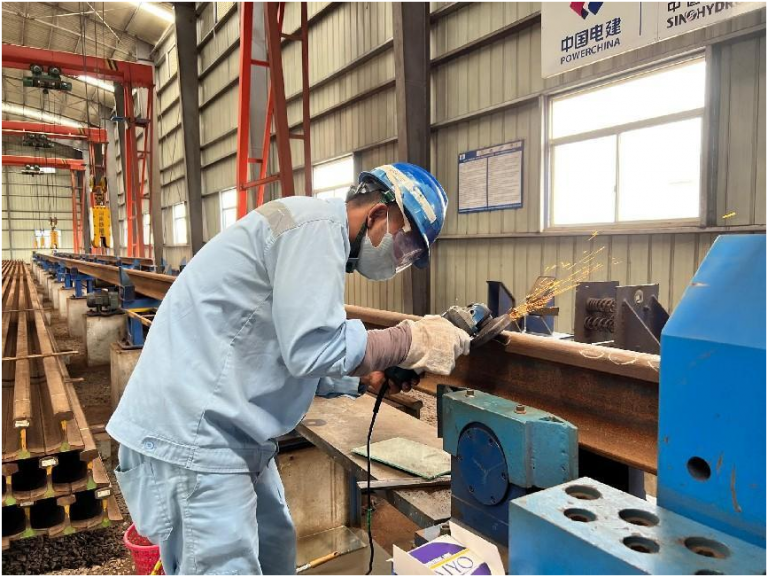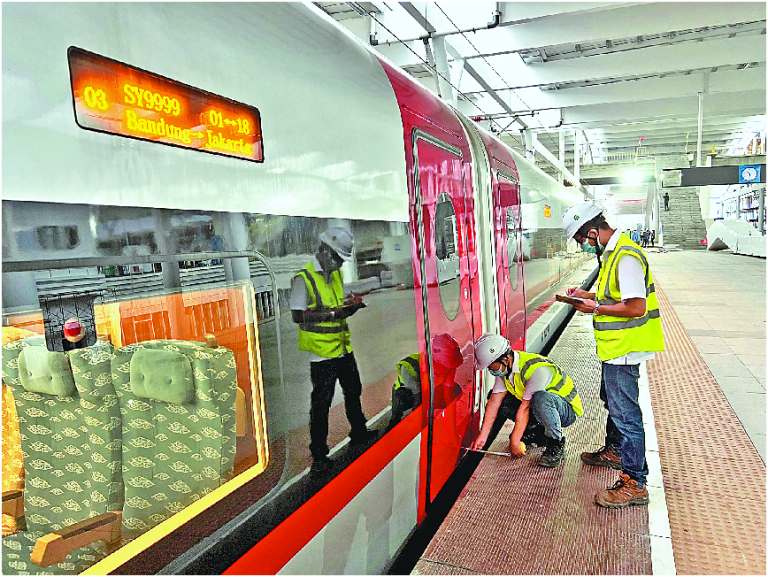
By Li Qiang, People’s Daily
Veiled in drizzle, the Tegalluar station in Bandung, Indonesia’s West Java province, saw the first bullet train of the Jakarta-Bandung High Speed Railway (HSR) pull into itself a few days ago.
Several young men were livestreaming this moment outside the construction site. Apart from construction workers, these video content makers were the busiest people in the recent days.
Eko Azza was one of them. He started recording the construction progress of the Jakarta-Bandung HSR six months ago, and has so far uploaded over 380 relevant videos, with the most popular one receiving nearly a million views.
His videos clearly present the development of the major engineering project – the erection of piers, box girders being hoisted, the pavement of crossties and rail tracks …
These videos earned Azza a huge number of followers. There are people waiting for him to update and leaving comments on his page every day.

The Jakarta-Bandung HSR is the first high-speed railway in Southeast Asia. It has attracted huge attention from the Indonesian people and become one of the hottest topics on Indonesia’s social media platforms.
Painted in silver and red on the outside with the abstract pattern of Komodo dragon, the heaviest lizard species on Earth and a treasure of Indonesia, the carriages of the Jakarta-Bandung HSR are nicknamed “Red Komodo” on the internet.
Many Indonesian internet users have left comments on Azza’s page, saying they are proud that the first “Red Komodo”HSR of Southeast Asia is in Indonesia and they can’t wait to board it.
Friendship, which derives from close contact between the people, holds the key to sound state-to-state relations. The heated discussion over the “Red Komodo” fully mirrors the profound significance of the Jakarta-Bandung HSR. The railway not only shortens the trip between Jakarta and Bandung, but also brings closer the Chinese and Indonesian peoples. It reflects the strong appeal and cohesion of the Belt and Road Initiative (BRI).

China seeks not only its own development, and the BRI aims to achieve development that brings win-win outcomes to all countries that are willing to cooperate with China and finally realize harmony for the entire humanity.
It was during a state visit to Indonesia in 2013 that Chinese President Xi Jinping proposed to build the 21st Century Maritime Silk Road. The two countries jointly promoted synergy between China’s BRI and Indonesia’s “Global Maritime Fulcrum” Vision, pushed forward major cooperation projects such as the Jakarta-Bandung HSR, the Regional Comprehensive Economic Corridors and the “Two Countries, Twin Parks.” Together, they have set a good example of major developing countries seeking to strengthen themselves through win-win cooperation.
From the China-Laos Railway to the Jakarta-Bandung HSR, from the Port of Piraeus to the Haifa Port, and from the China-Pakistan Economic Corridor to the China-Indochina Peninsula Economic Corridor, the BRI has brought tangible benefits to participating countries over the past nine years and become a popular global public good.
Now, “Red Komodos” are standing by to welcome Indonesian passengers. This high-speed railway of win-win cooperation and long-term stability signifies the friendship between China and Indonesia. The two peoples will keep working together to build a more prosperous future.










